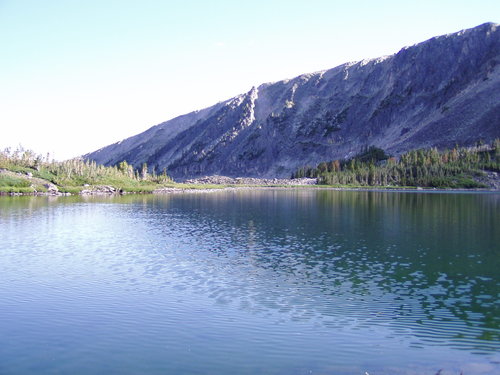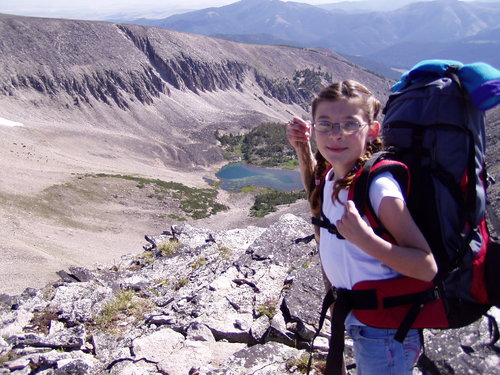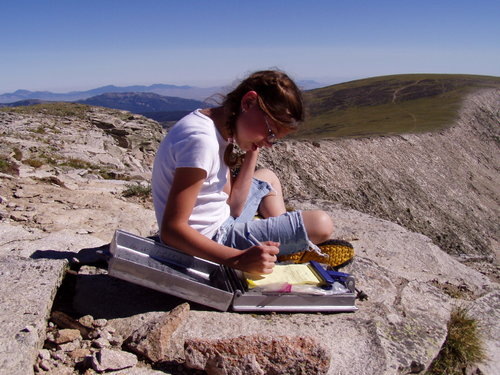Navigation
Install the app
How to install the app on iOS
Follow along with the video below to see how to install our site as a web app on your home screen.
Note: This feature may not be available in some browsers.
More options
You are using an out of date browser. It may not display this or other websites correctly.
You should upgrade or use an alternative browser.
You should upgrade or use an alternative browser.
Comments open on draft EA for bighorn sheep in Little Belts
- Thread starter JLS
- Start date
BigHornRam
Well-known member
Comments made. Great work MT FWP!
Done. Would like to see this happen.
MTLabrador
Well-known member
Commented. This would be a big win for sheep in Montana.
406dn
Well-known member
- Joined
- Dec 12, 2019
- Messages
- 2,244
I also made comments supporting the reintroduction of Bighorn Sheep into the Little Belts.
JLS, thank you for the link.
JLS, thank you for the link.
Bigjay73
Well-known member
If the habitat is high quality, why hasn't the existing herd grown? I'm seriously just asking, im no biologist.
Bighorn sheep are very slow to colonize new areas. It's a long ways from HD482 to the area they currently are. Odds are, a small band migrated together. With two rams and one ewe, it's easy to do the math and see this is a long term proposition that will suffer greatly from lack of genetic diversity.If the habitat is high quality, why hasn't the existing herd grown? I'm seriously just asking, im no biologist.
Last edited by a moderator:
stealthy_bowman
Well-known member
Thanks for the link! Just sent in my support.
kwyeewyk
Well-known member
If the habitat is high quality, why hasn't the existing herd grown? I'm seriously just asking, im no biologist.
When you have very small numbers to start, it only takes a little mortality to limit the growth curve, so predators or hard winters can keep it in check. Add some extra animals and they can overcome it and start to grow.
My one concern with this proposal (which I strongly support) is that it's not THAT far for sheep to disperse into Deep Creek and the Smith River drainages. There are two large sheep producers on the Smith, which unfortunately will hinder any long term genetic connectivity between bighorn sheep in the Holter Lake/Beartooth area with this herd. I can see one of these producers voicing strong opposition to this proposal, but hopefully I'm wrong. The other is a wonderful wildlife advocate and will likely support the reintroduction.
Here are a few pictures from the area where the current animals reside. The Judith watershed and Dry Fork of Belt Creek has some fantastic bighorn habitat in it.



Here are a few pictures from the area where the current animals reside. The Judith watershed and Dry Fork of Belt Creek has some fantastic bighorn habitat in it.



Lack of genetic connectivity to larger meta populations of sheep typically results in stagnant populations.If the habitat is high quality, why hasn't the existing herd grown? I'm seriously just asking, im no biologist.
The good news is there are several parts of the Little Belts that can sustain a viable sheep population. Sounds like the wool growers are supportive of this, which is great news.Lack of genetic connectivity to larger meta populations of sheep typically results in stagnant populations.
Get those comments in.
Irrelevant
Well-known member
Done, thanks for the link
Bigjay73
Well-known member
Understood, thanks for the lesson.Lack of genetic connectivity to larger meta populations of sheep typically results in stagnant populations.
Bigjay73
Well-known member
ThanksWhen you have very small numbers to start, it only takes a little mortality to limit the growth curve, so predators or hard winters can keep it in check. Add some extra animals and they can overcome it and start to grow.
Nameless Range
Well-known member
Thanks for the link. The Little Belts are a special place with so much possibility. I've always thought them an understated mountain range. It's exciting to think of expanding Bighorns in them. Comment sent.
dcopas78
Well-known member
That's a beautiful area and I want to go back some day. Killed my first muledeer very near there.My one concern with this proposal (which I strongly support) is that it's not THAT far for sheep to disperse into Deep Creek and the Smith River drainages. There are two large sheep producers on the Smith, which unfortunately will hinder any long term genetic connectivity between bighorn sheep in the Holter Lake/Beartooth area with this herd. I can see one of these producers voicing strong opposition to this proposal, but hopefully I'm wrong. The other is a wonderful wildlife advocate and will likely support the reintroduction.
Here are a few pictures from the area where the current animals reside. The Judith watershed and Dry Fork of Belt Creek has some fantastic bighorn habitat in it.
View attachment 146103
View attachment 146104
View attachment 146105
HighWildFree
Well-known member
Supporting comments are in. I see so much good sheep habitat devoid of sheep that it's good to see us moving toward more herds in the state.
Similar threads
- Replies
- 8
- Views
- 856
- Replies
- 1
- Views
- 651
- Replies
- 1
- Views
- 621




